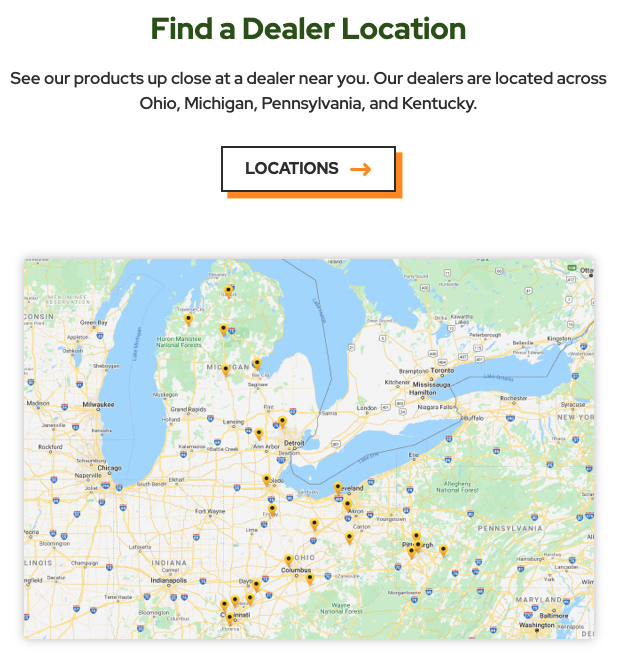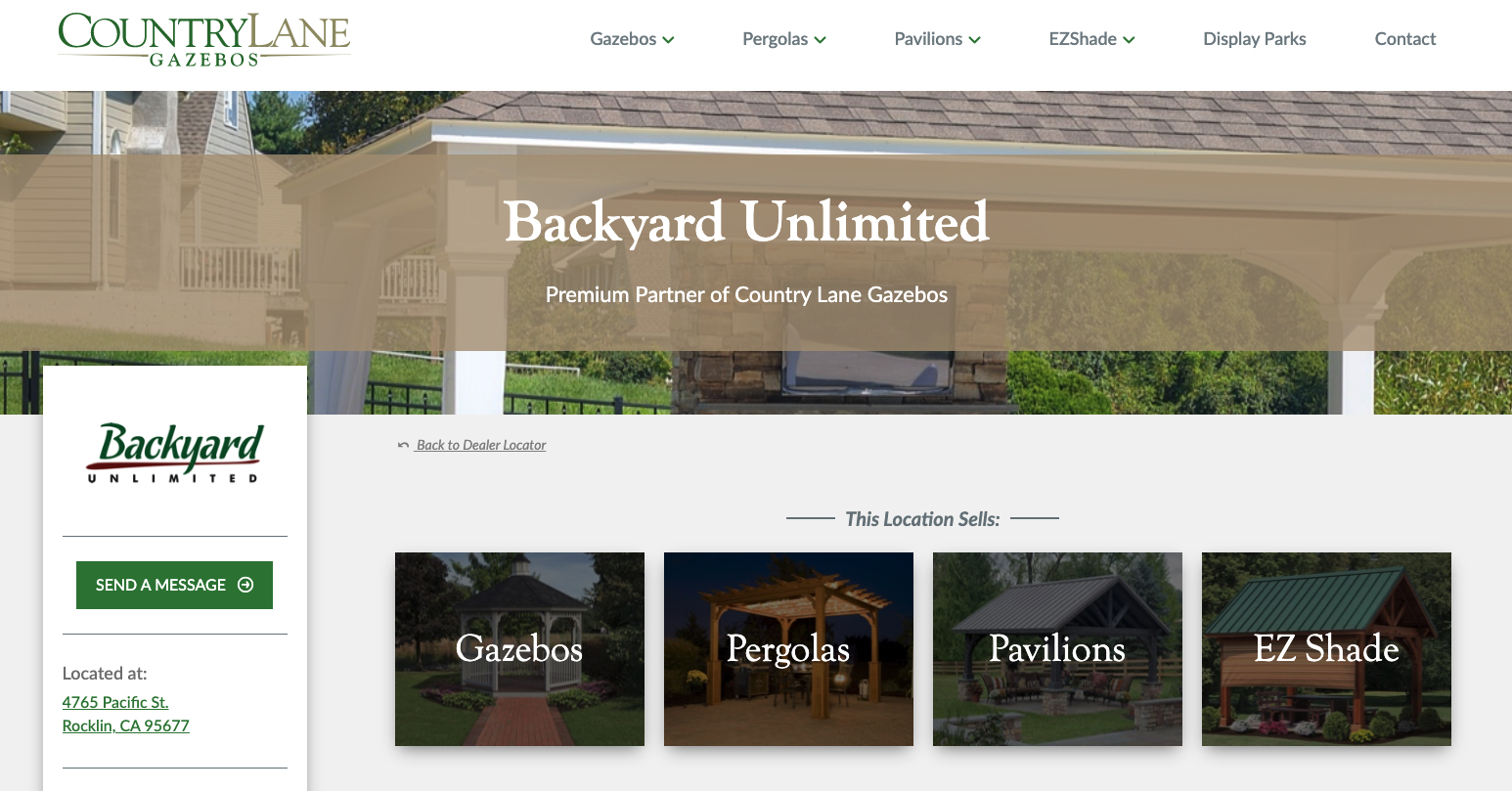Common Website Mistakes for Manufacturers
admin | Apr 27, 2022
Is your website doing the most to grow your business online?
At YDOP, we partner with outdoor living manufacturers across the United States, helping them grow their business and sell more products through digital marketing efforts. Over the years, we’ve seen some repeated mistakes made on websites, which can limit the manufacturer’s ability to hit their growth goals.
Whether you are selling sheds, deck components, furniture, firepits, playsets, or other products for the outdoor living space – make sure you are avoiding these common mistakes on your website.
Common Website Mistakes for Outdoor Living Brands
1. Not valuing SEO
At its core, search engine optimization (SEO) is pretty simple: when your potential customers are conducting research on Google, do they find you or your competitors?
In recent years, the outdoor living industry has been flooded with tons of online competition – from big box stores, online retailers, and e-commerce marketplaces – all of which are angling for the same searchers.
Well-established manufacturers can fall into complacency with their SEO efforts, not investing in growing their moat on Google until they are already losing traffic to these competitors.
Another SEO opportunity that many manufacturers don’t fully understand: increasing search volume for your own brand. While it is crucial to rank for important keywords (like “deck railings” or “pavilion kits”), your brand has an advantage over all other brands: the brand itself. Growing the number of searches each month for your brand can provide long-term value in terms of affordable, high-qualified potential customers to your website.
2. Underinvestment in your website
Most growing brands see value in investing in their marketing efforts – catalogs, truck wraps, mobile displays, sponsoring influencers, and more. Yet the website can often get neglected, either seen as a lower priority than other initiatives or rarely updated after being built or rebuilt.
Here’s a secret that many companies don’t understand: a website is never finished. Gone are the days of just building a website, launching it, and then never changing it. Instead, savvy marketers are constantly testing, iterating, and improving a website to enhance rankings on Google, increase conversions, and make the experience better for visitors. With heat mapping, usability studies, and advanced analytics tracking, you can identify issues, eliminate friction, and update your site so that it qualifies users and directs them to the right call to action.
3. Confusing your audiences
By nature, an outdoor manufacturer will have multiple audiences visiting the website. Homeowners will want to see colors, features, and design inspiration. Contractors & architects will want to see installation tips & specifications. Dealers will want access to promotional materials and other resources to help sell your product.
On your website, are you speaking to all these audiences at the same time? Is there a clear area where you speak to each audience?
Too often we see info for all of these audiences jumbled together in the main navigation, or a single resource section with info for all the audiences. Without clear sections for each audience – as well as helping each find their respective information – you are introducing unnecessary confusion and frustration for all audiences.
A great example of how to speak to multiple audiences is found on college websites. Colleges need to speak primarily to potential students and their parents; additional audiences include current students, faculty, alumni, and donors. For these sites, the main navigation of the website is reserved for potential students, while the top bar of the website leads secondary audiences to dedicated pages or even whole other websites.

4. Not being the best resource for your builders & dealers
It is common for your frontline partners – whether they are contractors or dealers – to use your website as a sales & marketing tool. Sometimes it is because they have underinvested in their own website, or because they don’t want to keep up with updates in your catalog or offerings.
Make sure you are giving your partners, dealers, and builders the tools they need to sell your product. Inspiration galleries are great, as homeowners can see your product in real-life situations. Online visualizers are popular ways to show custom options for sheds, outdoor structures, and decks. And make sure all images on your site have captions or descriptions of features, colors, and options so homeowners can easily refer to them.
5. Not leveraging your network
If you are like most manufacturers, you likely have a page for homeowners to find a local connection; it’s often labeled as Find a Dealer, Where to Buy, Find a Contractor, Retail Partners, or something similar.
These pages are almost always search-driven, allowing users to enter their location and find the closest locations or partners. The information given is usually pretty basic – name, address, maybe hours, and directions. While this is helpful for people that have already made it to your website, this approach limits the impact your network can have on Google.

In some cases, we recommend building out individual pages for each dealer, builder, or retail location. There are several benefits:
- You can leverage your network’s footprint to rank in geographic areas
- Your site can rank higher on searches for your partners, sometimes even outranking them
- You can overcome dealers who don’t have a website
- You can run ads to these pages as part of a co-op marketing campaign
- You can provide an SEO boost to your partners

Plus, you can still keep your map or search-based finder, only you would then be directing users to individual pages for each dealer/builder/retailer.
While it does take some effort to initially build out and populate the information, this approach has a compounded effect on your website’s performance in terms of search visibility and qualified leads – especially in hyperlocal geographic searches.
6. Unclear Call(s) to Action
At the end of the day, you need to tie your website to specific business goals. Website visitors are nice, but the health and performance of an outdoor manufacturer’s website need to be tied to one or several specific calls to action. These CTAs can be tied to revenue (orders), lead generation (quotes, contractor sign up), or other specific growth goals (in-store visits, direction requests, PDF downloads).
CTAs are really easy to mess up – especially on manufacturer websites. Either the CTA doesn’t match the intended audience, the CTA gets lost on the website or is hard to find, or there are competing CTAs vying for attention. And please don’t make your main CTA to follow your brand on social media; likes and comments are great, but they don’t pay the bills.

Need Help Growing Your Brand Online? Let’s Talk
YDOP is the ideal digital marketing partner for outdoor living manufacturers and their dealers. Our approach to digital marketing focuses on the numbers that really matter: quotes, orders, and revenue. Our team is skilled at building award-winning websites, strategic SEO, revenue-focused digital advertising, email marketing, and user experience.
To book your free call with our digital strategist, contact us today.